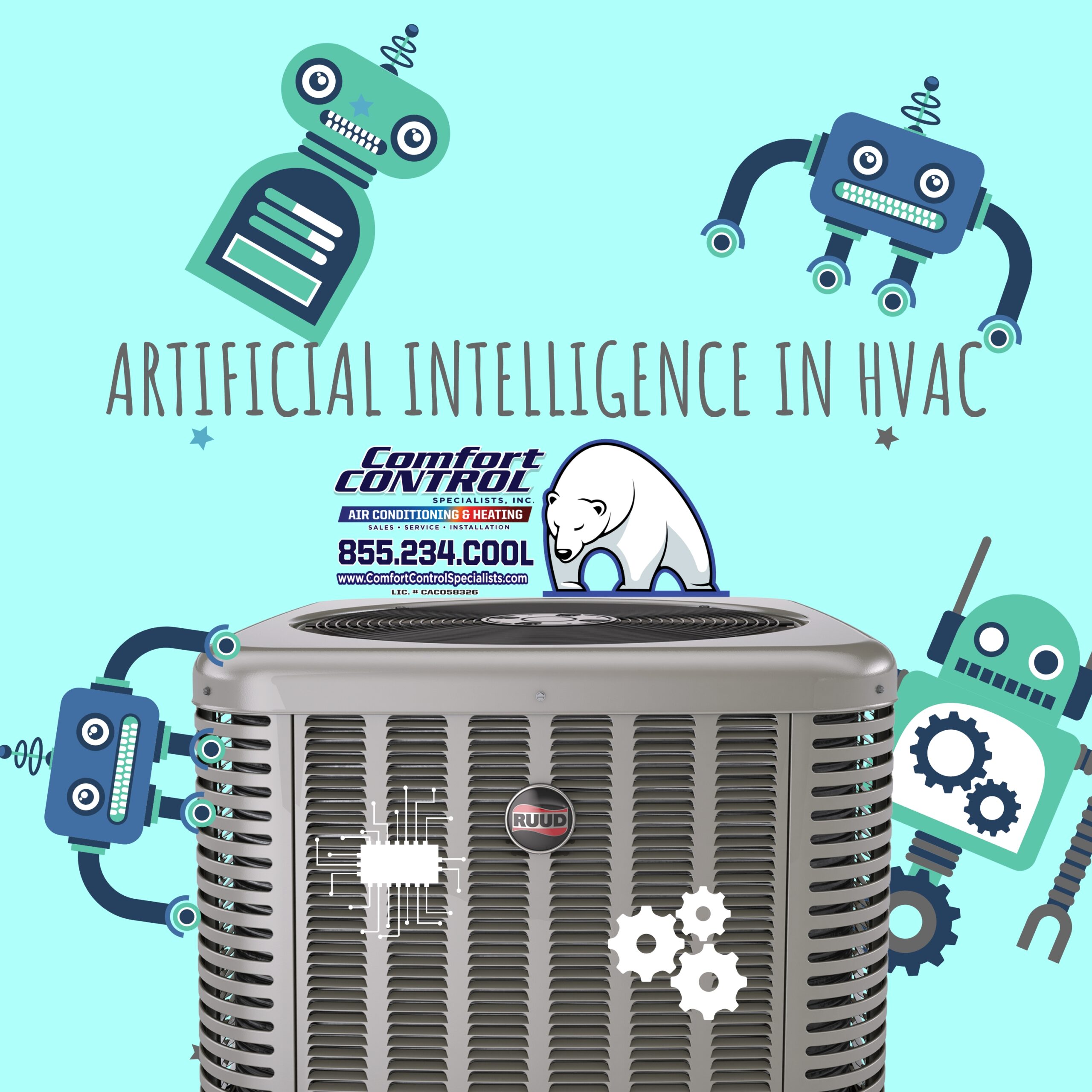[vc_row][vc_column][vc_column_text]In today’s era of technological advancements, artificial intelligence (AI) is making its way into various industries, promising remarkable transformations. The heating and cooling sector is no exception, as smart algorithms driven by AI have the potential to revolutionize climate control. Let’s explore the realm of AI in HVAC systems and delve into how these intelligent algorithms are set to transform the way we control and manage indoor environments. Get ready to discover the future of climate control!
The Promise of AI in HVAC
The integration of AI in HVAC systems holds tremendous promise for both energy efficiency and enhanced comfort. By leveraging advanced algorithms and machine learning capabilities, AI can optimize temperature control, ventilation, and humidity levels in real-time. According to a study conducted by Navigant Research, AI-enabled HVAC systems have the potential to reduce energy consumption by up to 20% when compared to traditional systems. This significant reduction in energy usage translates to substantial cost savings and a reduced environmental impact.
Machine Learning: Empowering HVAC Intelligence
At the core of AI in HVAC lies machine learning, a subset of AI that enables systems to learn from data and make informed decisions. By continuously analyzing sensor data, historical patterns, and user preferences, AI algorithms can adapt HVAC settings dynamically. An International Energy Agency (IEA) study demonstrated that machine learning algorithms can reduce HVAC energy consumption by an additional 15%, leading to substantial cost savings and environmental benefits.
Smart Thermostats: Unleashing AI-Driven Climate Control
Smart thermostats are the forefront of AI integration in HVAC systems. These devices utilize AI algorithms to learn user behavior, adapt to preferences, and optimize temperature settings accordingly. By detecting occupancy patterns, analyzing weather data, and considering individual comfort levels, smart thermostats create personalized climate zones, reducing energy waste and enhancing comfort. A survey by Parks Associates found that households with smart thermostats experienced average energy savings of 10-15%.
Predictive Maintenance: Ensuring Optimal HVAC Performance
AI’s predictive capabilities play a crucial role in maintaining optimal HVAC system performance. By continuously monitoring system parameters, AI algorithms can detect anomalies, predict failures, and schedule maintenance before issues escalate. This proactive approach minimizes downtime, reduces repair costs, and extends the lifespan of HVAC equipment. According to a report by McKinsey, predictive maintenance can decrease maintenance costs by up to 30% and increase equipment uptime by 20%.
Indoor Air Quality Optimization
AI algorithms in HVAC systems are not limited to temperature control but also prioritize optimizing indoor air quality (IAQ). By analyzing data from air quality sensors, AI-powered HVAC systems can automatically adjust ventilation rates, filter efficiency, and air circulation to maintain healthy IAQ levels. A study published in the journal Building and Environment found that AI algorithms reduced particulate matter (PM) levels by up to 45% in HVAC systems equipped with advanced IAQ optimization features.
Demand Response and Grid Integration
AI in HVAC systems plays a vital role in demand response programs and grid integration. By analyzing real-time electricity pricing, weather forecasts, and grid load conditions, AI algorithms can optimize HVAC operation to align with peak demand periods or when electricity costs are lowest. A study conducted by the Lawrence Berkeley National Laboratory revealed that AI-enabled HVAC systems reduced peak power demand by 15-20% and saved up to 30% on energy costs.
The Role of Big Data in AI-Driven HVAC
The successful implementation of AI in HVAC heavily relies on the availability of vast amounts of data for training and decision-making. The proliferation of Internet of Things (IoT devices), building automation systems, and cloud computing has facilitated the collection and analysis of extensive data sets. This wealth of information allows AI algorithms to make accurate predictions, optimize system performance, and adapt to changing conditions in real-time. With access to big data, AI-driven HVAC systems can learn from past experiences, identify patterns, and make intelligent decisions that maximize energy efficiency and occupant comfort.
Overcoming Challenges and Ensuring Success
While the potential of AI in HVAC systems is exciting, there are challenges to consider for successful implementation. One key challenge is the need for accurate and reliable data. The quality and integrity of the data used for training and decision-making greatly impact the performance and effectiveness of AI algorithms. It is essential to have robust data collection methods, ensure data privacy and security, and maintain data integrity to maximize the benefits of AI in HVAC.
Furthermore, the integration of AI in existing HVAC infrastructure may require updates and compatibility with AI-enabled components. Retrofitting buildings with AI-driven HVAC systems may involve initial investments, but the long-term benefits in terms of energy savings, improved comfort, and maintenance cost reductions outweigh the initial costs.
The Future of AI in HVAC
The future of AI in HVAC holds immense potential for further advancements. As technology continues to evolve, we can expect more sophisticated AI algorithms, increased interoperability between HVAC systems and other smart devices, and seamless integration with renewable energy sources. The combination of AI, machine learning, and big data analytics will pave the way for smarter, self-learning HVAC systems that continuously adapt to changing conditions, optimize energy consumption, and provide personalized comfort.
Emerging technologies such as edge computing and 5G connectivity will play a crucial role in enabling real-time data processing and enhancing the responsiveness of AI-driven HVAC systems. This will enable faster decision-making, improved energy management, and increased interoperability between various components of the building ecosystem.
Embracing the Benefits of AI in HVAC
In conclusion, AI-driven HVAC systems are poised to revolutionize climate control, offering numerous benefits such as enhanced energy efficiency, improved occupant comfort, predictive maintenance, and optimized indoor air quality. The integration of AI algorithms enables HVAC systems to adapt to changing conditions, learn from data, and make intelligent decisions. With the potential to reduce energy consumption, lower operating costs, and minimize environmental impact, AI in HVAC is a game-changer in the pursuit of sustainable and efficient buildings.
As the world increasingly prioritizes energy efficiency and environmental responsibility, embracing AI in HVAC becomes crucial. By leveraging the power of smart algorithms and embracing the potential of AI, we can create a future where climate control is seamlessly integrated, energy-efficient, and personalized to meet individual needs. The revolution in climate control is just beginning, and with AI at its core, we are on the cusp of a new era in HVAC systems that will shape the buildings of tomorrow.
So, let us embrace the transformative power of AI in HVAC and embark on a journey towards smarter, more sustainable, and comfortable buildings for the benefit of both occupants and the environment. The future of climate control is bright, intelligent, and AI-driven.
If you live in Odessa, Keystone, Spring Hill, Tarpon Springs, Land O Lakes, Oldsmar, Brooksville, or the surrounding areas, please don’t hesitate to contact the Comfort Control Specialists for your heating and cooling automation needs or for a comprehensive AC inspection and tune-up.[/vc_column_text][/vc_column][/vc_row]



